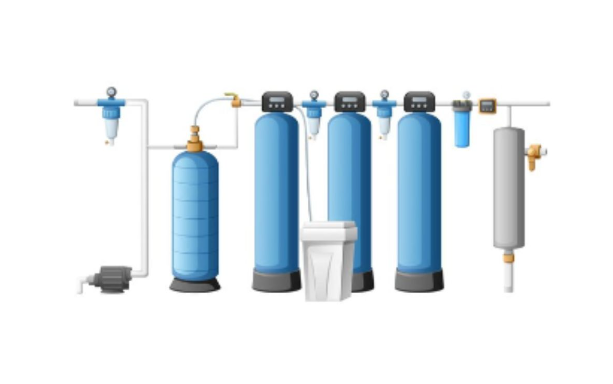7 Ways to Improve Your Manufacturing Supply Chain
If you’re looking to enhance your manufacturing operation, the supply chain is a good place to start. To improve the efficiency and profitability of your company, you must have a sound supply chain management plan in place.
But what exactly is a supply chain? Well, it’s the process by which materials, components, or finished products move through pipeline stages. In manufacturing, it includes the suppliers and distributors.
Wanna learn more? Keep reading as we go over several ways to enhance your manufacturing supply chain and make your business run more smoothly.
1. Enhance Your Warehousing and Storage Solutions
You should look into enhancing your manufacturing warehouse and storage solutions. First of all, explore the possibility of investing in better facilities and technologies for warehousing and storage. Having an organized system will help reduce inventory long-term.
Furthermore, training your staff in the best practices for stock storage can help you achieve the highest efficiency in this area. Have a just-in-time inventory system. This will reduce the cost of storage and prevent you from accumulating surplus stock.
To sum up, it is important to invest in new technologies, train staff, and review your inventory system.
2. Simplify Your Supply Chain
Simplifying your manufacturing supply chain is key to improving its overall performance. Streamline the processes involved in production and consolidating suppliers, processes, and logistics. This way your production costs will reduce and your supply chain efficiencies will improve.
You should also implement visibility and communication tools throughout the entire supply chain. This will provide inventories and production lines with real-time inventory and in-demand information. So it can help prevent production delays, unexpected production stops, and fluctuations in supply.
It is also important to select suppliers that provide quality raw materials, on-time delivery, and competitive pricing. This will help reduce costs and make the supply chain more efficient in the long run.
3. Leverage Flexible Supplier Agreements
One of the best supply chain solutions is to leverage flexible supplier agreements. Negotiate terms with suppliers, such as payment terms, volume discounts, or other delivery requirements.
This allows them to be more competitive in pricing and offer better quality products. It also ensures that you get the best deals from your suppliers while increasing efficiency and reducing costs.
Additionally, by allowing suppliers to customize their agreements, they are more likely to remain agile and responsive to changing market conditions. These agreements should also prioritize lead time, quality, and service. So they understand what your expectations are and can provide you with more accurate delivery times.
4. Unlock the Benefits of Automation
Automation can reduce labor costs and allow supply chain managers to respond quickly to changes in demand. It can even increase the accuracy of information gathered.
You should automate your order entry, fulfillment, inventory tracking, and order management. This way, you can take advantage of decreased process cycle times, thus creating greater efficiency.
5. Try Outsourcing
Outsourcing involves subcontracting certain aspects of the supply chain to a third-party vendor like VMS. This takes the stress off your internal team and can provide the capacity needed to accommodate large orders or fast-paced production needs.
Outsourcers may also provide designated supply-chain professionals. They are experienced with managing comprehensive, global supply chains.
But while outsourcing may have associated costs and risks, it also provides the opportunity to cut costs in other areas. And it often offers greater flexibility and scalability than an in-house solution.
Additionally, outsourcing allows you to stay focused on core competencies and prioritize business objectives. The third-party vendor will take care of the daily details.
Ultimately, outsourcing can help to streamline a manufacturing supply chain. At the same time, you can save resources, time and narrow the margin of human error.
6. Use Data Collection and Analysis
Data collection and analysis is essential for improving a manufacturing supply chain.
Having access to accurate data and being able to interpret it is key for identifying performance issues, developing trends, and outlining patterns. Gathering data from suppliers, shippers, and customers allows for an evaluation of efficiency, timelines, and pricing.
At the same time, manufacturing businesses can use data to measure customer satisfaction, observe buying habits, and set correctly aligned goals. To further enhance data collection and analysis, manufacturing companies can invest in enterprise resource planning (ERP) software. You can apply business intelligence techniques and introduce automated processes.
With the closely monitored data policies and strategies, your organization can identify costly bottlenecks. You can reduce waste and increase customer satisfaction.
Regularly carried out data collection and analysis helps supply chain managers to become more proactive in optimizing processes. It will ultimately improve your supply chain performance.
7. Establish Partnerships to Increase Visibility
Establishing partnerships within the manufacturing supply chain is a great way to increase visibility and optimize processes. Developing strong communication with vendors and suppliers helps ensure that everyone is up to speed on new processes or delays.
Having a regular and consistent contact with each partner allows any potential issues to be addressed quickly. Mutual trust is essential to establishing tight partnerships. Ensure that all agreements are sound and documented thoroughly to avoid mistakes or misunderstandings.
It is also beneficial to discuss quality assurance methods with partners. Medical and other high-tech industry designs must meet stringent safety regulations and measures.
Providing feedback to partners is essential for continual improvement. This reinforces trust and leads to creative problem-solving strategies. Building strong partnerships and increasing visibility are two essential ways to improve the manufacturing supply chain.
Follow Our Guide to Improve Your
Manufacturing Supply Chain Now!
Manufacturers should always evaluate the entire supply chain process to identify any areas where improvement is needed. By understanding each step of distribution including planning, transportation, and materials management, you can better understand any risks and act swiftly to address them.
Taking the steps to improve your manufacturing supply chain ultimately leads to improved profit margins. So do your research. Learn more about ways to improve your manufacturing supply chain.
Did you find this article helpful? If so, check out the rest of our site for more.



